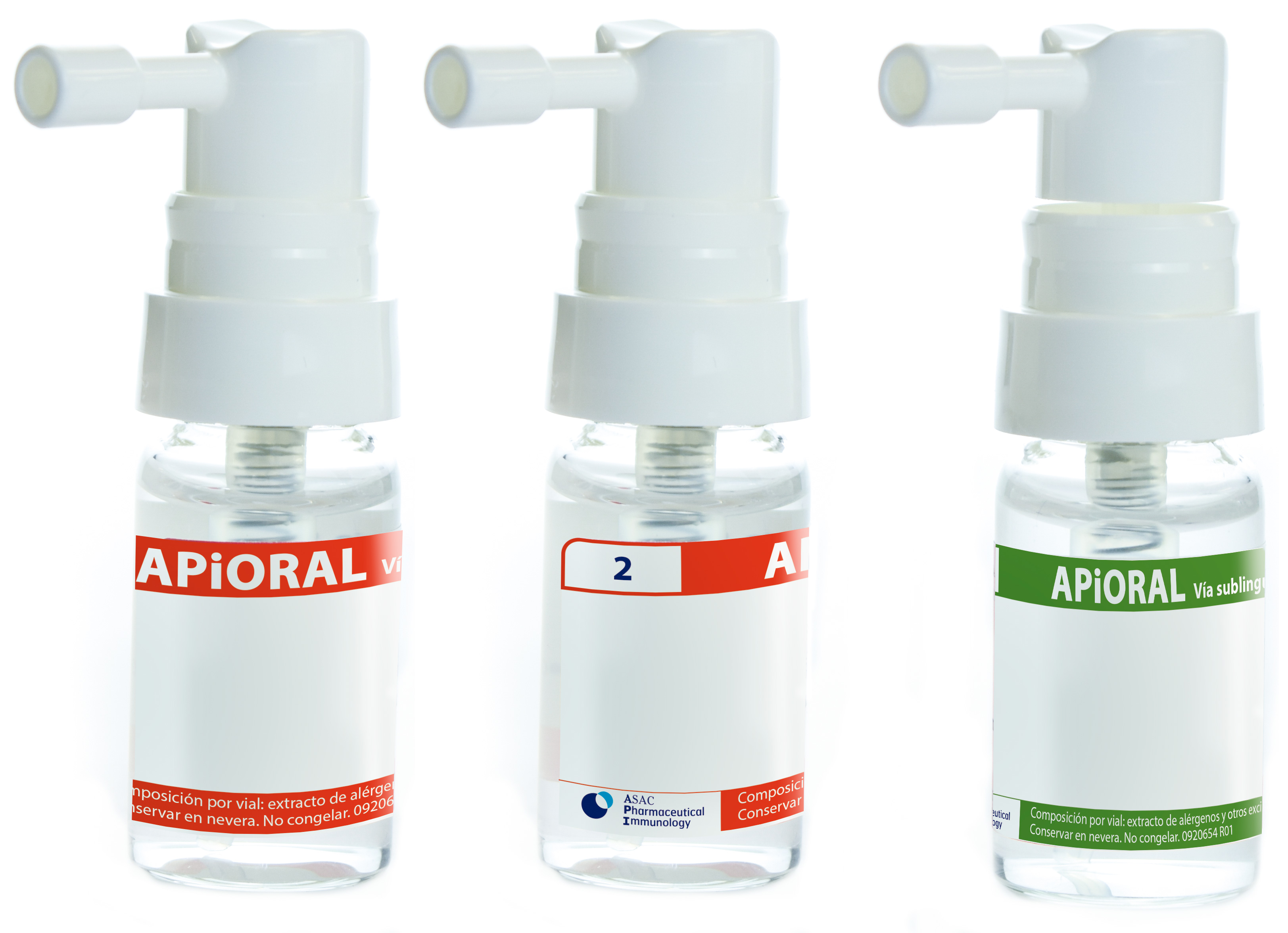


What are allergies?
Allergies, also called hypersensitivity reactions, are responses of the immune system (the defenses of our body) to come into contact with substances called allergens which are usually tolerated by most people. These are frequent pathologies that affect more than 25% of the world’s population according to the World Health Organization (WHO). In addition, over the last several decades, changes in the environment, habitat and way of life and a greater number of pets have favored the progression of allergy. Immunotherapy, also known as hyposensitizing therapy, reduces the sensitization of patients by attenuating the symptoms they experience in contact with the allergen. Immunotherapy is usually effective, the improvement is observed a few months after having started the vaccination, becoming apparent around the first year of treatment.
Allergy treatment
Treatment with allergen vaccines consists of progressively applying repeated doses of the allergen to which one is allergic in order to diminish or eliminate the reaction that occurs when coming into contact with it. Allergenic vaccines are able to modulate the patient’s immunological response, thereby changing the natural course of the allergic disease mediated by the production of IgE antibodies, with a long-term lasting effect after the end of treatment. This type of immunotherapy is used to treat allergy cases caused by pollen, dust mites, animal epithelia and certain fungi.

APiORAL
Sublingual efficacy and safety
Sublingual treatment offers an effective and safe alternative for those patients who prefer a home self-management treatment, no need for travel.
This treatment consists in using a spray dispenser to apply a specific amount of solution with the allergens under the tongue, where it must remain for 2-3 minutes until it is absorbed.
APiORAL is prepared individually for each patient, because each person has a different sensitization to allergens, so it is up to the doctor to assess the composition in each case.
APiORAL is used to treat allergic illness that occurs with rhinitis, rhinoconjunctivitis and/or seasonal or perennial bronchial asthma produced by inhaled allergens.
It is supplied in spray dispenser bottles.
• APiORAL MAX: Increases the concentration to 3000 TBU/ml.
• APIORAL DUO: The treatment of choice for polysensitive patients. Concentration 100/100 for both allergens.
• APiORAL FORTE: One more step in the sensitisation to mites and grasses. Concentration: 6000 TBU/ml.
Initial Treatment
The initial treatment can contain 3 vials (1,2,2) with a duration of 105 days*, 2 vials (2,2) with a duration of 98 days* or 1 vial (2) with a duration of 49 days*
*Duration of the treatment using the conventional regimen.
Maintenance treatment
The maintenance treatment can contain 4 vials (2,2,2,2) with a duration of 196 days*, 3 vials (2,2,2) with a duration of 147 days*, 2 vials (2,2) with a duration of 98 days* or 1 vial (2) with a duration of 49 days*
*Duration of the treatment using the conventional regimen.
****All the above presentations may not be marketed in all countries.
Grass mix.* + Olea europaea (3000/3000 TBU/ml)
Grass mix.* + Parietaria judaica (3000/1000 TBU/ml)
Grass mix.* + Salsola kali (3000/1000 TBU/ml)
Grass mix.* + Cupressus arizonica (3000/1000 TBU/ml)
Olea europaea + Salsola kali (3000/1000 TBU/ml)
Olea europaea + Cupressus arizonica (3000/1000 TBU/ml)
Dermatophagoides mix + Blomia tropicales (3000/1000 TBU/ml)
Dermatophagoides mix + Lepidoglyphus destructor (3000/1000 TBU/ml)
*Poa, Dactylis, Lolium, Phleum, Hordeum, Secale, Triticum
FORTE:
Dermatophagoides mix*
Grass mix**
*Dermatophagoides pteronyssinus, Dermatophagoides farinae
**Poa, Dactylis, Lolium, Phleum, Hordeum, Secale, Triticum
DUST MITES:
Dermatophagoides pteronyssinus (MAX)
Dermatophagoides farinae (MAX)
Dermatophagoides mezcla (D. pteronyssinus, D. farinae) (MAX)
Blomia tropicalis
Lepidoglyphus destructor
GRASS POLLENS:
Spontaneous/wild grass (Dactylis, Lolium, Phleum, Poa) (MAX)
Cultivated grass (Hordeum, Secale, Triticum) (MAX)
Dactylis glomerata (MAX)
Lolium perenne (MAX)
Phleum pratense (MAX)
Poa pratensis (MAX)
Hordeum vulgare (MAX)
Secale cereale (MAX)
Cynodon dactylon (MAX)
Triticum sativum (MAX)
TREE POLLENS:
Olea europaea (MAX)
Cupressus arizonica
Platanus acerifolia
Fraxinus excelsior
Quercus robur
PLANT POLLENS:
Artemisia vulgaris
Chenopodim album
Parietaria judaica
Salsola kali
Plantago lanceolata
Ambrosía trífida
Helianthus annus
EPITHELIUM:
Cat
Dog
FUNGUS:
Alternaria alternata
Aspergillus fumigatus
Penicillium notatum


